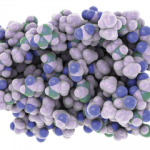 ORLANDO—Despite the COVID-19 pandemic, the past two years have been exciting for rheumatology providers and patients. We’ve seen the U.S. Food & Drug Administration (FDA) approve new therapies and expand indications for established drugs. At the 2022 ACR Education Exchange, Jeffrey Curtis, MD, MS, MPH, Marguerite Jones Harbert-Gene Ball Endowed professor of medicine, Division of Clinical Immunology & Rheumatology, University of Alabama at Birmingham, provided an evidence-based update on new drugs on the block.
ORLANDO—Despite the COVID-19 pandemic, the past two years have been exciting for rheumatology providers and patients. We’ve seen the U.S. Food & Drug Administration (FDA) approve new therapies and expand indications for established drugs. At the 2022 ACR Education Exchange, Jeffrey Curtis, MD, MS, MPH, Marguerite Jones Harbert-Gene Ball Endowed professor of medicine, Division of Clinical Immunology & Rheumatology, University of Alabama at Birmingham, provided an evidence-based update on new drugs on the block.
New Drugs & Indications
Dr. Curtis began his presentation with an outline of newly FDA-approved therapies (see Table 1). In the systemic lupus erythematosus (SLE) world, we saw the FDA approval of anifrolumab and voclosporin. For anti-neutrophil cytoplasmic antibody-associated vasculitis (AAV), we got avacopan. For systemic sclerosis-associated interstitial lung disease (SSc-ILD), we now have nintedanib and tocilizumab. FDA approval of bimekizumab for psoriasis was delayed due to COVID‑19 travel restrictions, but—given the impressive data accumulated for bimekizumab—approval is expected soon. For postmenopausal osteoporosis, there’s romosozumab. And last but not least, a new laboratory test is now available to assist with drug selection for patients with rheumatoid arthritis (RA) for whom methotrexate monotherapy has proved ineffective.

Dr. Jeffrey Curtis
When it comes to expanded indications, canakinumab is now FDA approved for adult-onset Still’s disease, tofacitinib for ankylosing spondylitis, upadacitinib for psoriatic arthritis and both secukinumab and ixekizumab for non-radiographic axial spondyloarthritis (nr-axSpA).
“As you may be aware, nr-axSpA was a controversial diagnosis, and whether the FDA would even accept this [disease] as a real thing was a concern. It’s great to have more options,” Dr. Curtis said.
Rejected Therapies
With these successes also came some failures. In March 2021, the FDA rejected tanezumab, a monoclonal antibody targeting nerve growth factor (NGF), which was developed for the treatment of osteoarthritis (OA).
“This [agent has] a promising new mechanism of action that could potentially treat OA,” said Dr. Curtis. “Despite the fact that this drug, like other NGF inhibitors, seemed to alleviate pain, a small percentage of patients studied had rapidly progressive OA or even more severe complications, [such as] osteonecrosis or tibial plateau fractures. This [FDA rejection] might be an ill harbinger for things to come for [NGF inhibitors]. We’d all like to see something new to treat OA, but this might not be it—at least in the FDA’s mind given safety concerns.”
Anifrolumab
Anifrolumab is a type I interferon (IFN) receptor antagonist approved to treat adult patients with moderate to severe SLE who are receiving standard therapy.1 Type I IFN is a known pathogenic mediator in SLE, and cell signaling by type I IFNs results in IFN-stimulated gene transcription (also known as the IFN gene signature). Some SLE patients have high IFN gene signatures, and some have low IFN gene signatures. Anifrolumab blocks the receptor that leads to IFN-stimulated gene transcription.


